
The
Seven-Feasts of Israel:
the First and Second Coming of Messiah
1. Overview of the Spring Feasts of Israel: Passover, Unleavened, First Fruits, and Weeks

Introduction of the Spring Feasts of Israel
Most of us remember important times when members of our family gathered around the table feasting. For some this might be a Thanksgiving, Christmas or New Years dinner. It could even be a wedding supper as relatives we hardly remember flew into town to partake in the festivities. These memories tend to be milestones in our life; we have set aside these events in our memory because they are significance events.
When Moses led the children of Israel out of the land of Egypt, God set aside certain days to commemorate His special relationship with the descendents of Abraham, Isaac and Jacob. Israel entered Egypt as the family of Jacob about 1850 B.C., 400-years later they emerged as a nation composed of 12-tribes. God commanded Israel to set aside “Seven” feast days celebrate this unique relationship with the creator of the universe.
The feasts of Israel take a special place in scripture. They are referred to in both Old and New Testaments. In Leviticus 23 are listed in order of events according to the Biblical Calendar.
1 And the LORD spoke to Moses, saying, 2 “Speak to the children of Israel, and say to them: ‘The feasts of the LORD, which you shall proclaim to be holy convocations, these are My feasts.4 ‘These are the feasts of the LORD, holy convocations which you shall proclaim at their appointed times. Leviticus 23:1-2,4
The Lord takes ownership of these feasts listed in Leviticus, He calls them “My feasts”, He identifies these feasts as “Holy convocations” or sacred assembly. It is at these Feasts the Lord would meet with His people. These feasts are arranged to tell the story of God’s redemption plan for His people. He wanted to prepare the hearts of His people through the pictures conveyed in these seven feasts.
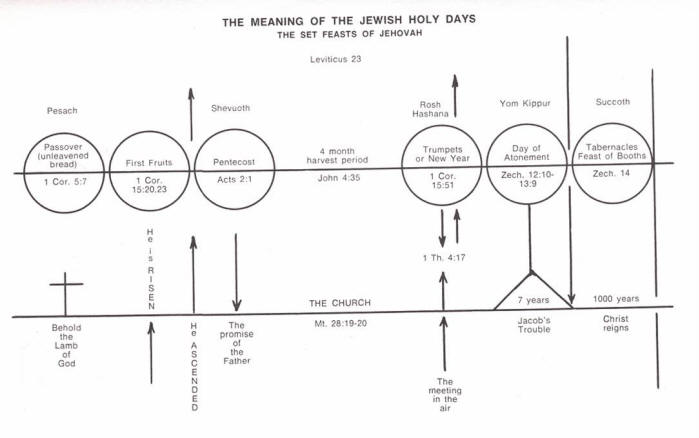
Several significant points must be remembered when we examine the Spring Feasts of Israel, as listed by Marvin J. Rosenthal in The Feasts of the Lord.“
· First, these seven feasts of the Lord were given to the Hebrew nation. The Jewish people are God’s covenant people.
· Second, these seven feast relate to Israel’s spring and fall agricultural seasons.
· Third, the timing of the seven feasts is based on the Jewish Lunar (moon) calendar of approximately 354-day years.
· Fourth and fundamentally, these seven feasts typify the sequence, timing and significance of the major events of the Lord’s redemptive career. They commence at Calvary where Jesus voluntarily gave Himself for the sins of the world (Passover), and climax at the establishment of the messianic Kingdom at the Messiah’s second coming (Tabernacles).
· Fifth, because the spiritual realities to which the feasts clearly point are fulfilled in Messiah, all men everywhere have been placed in an opportune position.
· Sixth, the participation of Gentiles in the blessing associated with the feasts God appointed for Israel should come as no surprise. It is consistent with God’s unconditional covenant to the patriarch Abraham, the central provision of which is, “In your seed all the nations of the earth shall be blessed” (Genesis 22:18)”[1]
There are seven feasts listed in Leviticus chapter 23, these seven feasts picture the Messiah’s role in humanities salvation. The number seven plays a significant role in the Bible.
· God created the heavens and the earth in seven days and rested on the sixth day.
· On the seventh day of the week the children of Israel were to rest from their labors. (Ex. 16:23,30)
· The seventh month is a holy month, with three feasts falling in that month (Trumpets, Atonement, Tabernacles Leviticus 23:24,27,34).
· Israel was told to not farm the ground in the seventh year. (Lev. 25:4)
· Seven sevens of years preceded the year of Jubilee when debts were forgiven and slaves set free (Lev. 25:8-12)
· Seventy “sevens” were determined on Jerusalem and the Jewish people, when God would bring redemption and salvation to Israel (Daniel 9:24-27)
· The book of Revelation has 7-seals, 7-trumpets and 7-bowls when the earth is judged prior to the return of Messiah (Christ). (Rev. 6, 8-9, 16)
Of the Seven Feasts, the first 4 involve the sacrifice of God’s Passover Lamb, the Messiah who dies to pay for the sins of the world. The last 3 Feasts typify the Second Coming Messiah who will come to rule and reign on the earth over the nations.
Passover
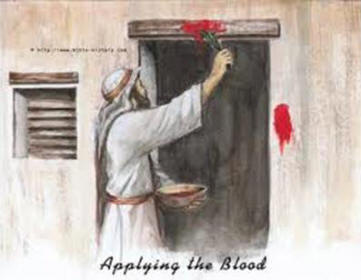 4
‘These are the feasts of the LORD, holy convocations which you shall
proclaim at their appointed times. 5 On the fourteenth day of the
first month at twilight is the LORD’s Passover. ” Leviticus 23:4-5
4
‘These are the feasts of the LORD, holy convocations which you shall
proclaim at their appointed times. 5 On the fourteenth day of the
first month at twilight is the LORD’s Passover. ” Leviticus 23:4-5
Passover is celebrated in the first month of the Jewish calendar in the month of Nisan, on the 14th day of the month.
The foundation of the Seven Feasts of the Lord is Passover. The feast of Passover celebrates an event which occurred almost 3500-years ago in the land of Egypt. God commanded the Israelites and believing Egyptians to kill a firstling lamb without blemish and take the blood of the lamb and apply it to the door posts of the house. Whoever was in the house would be spared, the angel of death would “Passover” the house and the “First Born” and the firstborn would not die. On the other hand if a Jew or Egyptian was in a house without the blood of a lamb then the firstborn would die.
The Lord commanded the children of Israel to celebrate their salvation from death by “Holy Convocation” to remember the event of Passover from generation to generation.
This event was a foreshadowing of the death of God’s Lamb the Messiah who would die for the sins of the world. His blood would then be applied to our lives and the angel of death would “Passover”. Jesus would instruct the church to memorize His death in the Lord’s Supper when believers gather. Communion is like “Passover” as the Lord commanded Israel to remember the events in Egypt. The Church is commanded to remember the event of the cross. Jesus is our “Passover Lamb” as John the Baptist declared when he saw Jesus.
29 The next day John saw Jesus coming toward him, and said, “Behold! The Lamb of God who takes away the sin of the world!..’ 35 Again, the next day, John stood with two of his disciples. 36 And looking at Jesus as He walked, he said, “Behold the Lamb of God!” John 1:29,35
The background to the Passover goes back to the time Jacob later known as Israel was invited by his son Joseph to move to the land of Egypt to an area known as Goshen. There the descendents of Abraham, Isaac and Jacob multiplied from 70 to over 1 million men, woman and children. The Egyptians began to oppress the Hebrews with cruel bondage when their leadership changed. After 400-years the children of Israel began to cry out to the Lord for their salvation (Exodus 2:23).
Moses had been raised in the house of Pharaoh, as a baby he was adopted by Pharaoh’s sister who found him as a baby in basket in the Nile. Since Moses was a Hebrew male he was to be killed, so his mother placed him in a waterproof basket in the Nile. Moses was raised as an Egyptian, even though he knew he was a Hebrew. At the age of 40, Moses killed an Egyptian who was abusing Hebrews. Moses was forced to flee into the wilderness of Midian. For forty years he watched the sheep of his father-in-law Jethro. At the age of eighty God spoke to him from a burning bush (Exodus 3:2) on Mt. Sinai, and told him to return to Egypt.
Moses delivered the Word’s of God to Pharaoh; Moses then proclaimed 10 plagues on the land of Egypt if the children of Israel were not released to serve “their God”. Each of these plagues was directed against the gods of Egypt. Even the last plague which resulted in the death of Pharaoh’s son showed the Pharaoh and his son were not gods as they considered themselves.
Like the lambs of Egypt which died on Passover, Jesus became our Lamb to die for our sins so death could “Passover” our lives. The events of Passover in Egypt 3500-years ago were pointing to the Lamb of God who would one day die in the place of others. The Passover lamb was a picture of the death of the “Servant” Messiah.
7 Therefore purge out the old leaven, that you may be a new lump, since you truly are unleavened. For indeed Christ, our Passover, was sacrificed for us. I Cor. 5:7
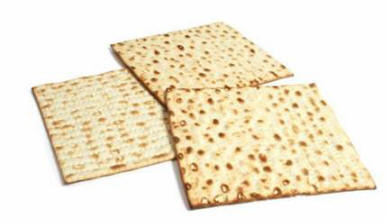 Feast
of Unleavened Bread
Feast
of Unleavened Bread
6 And on the fifteenth day of the same month is the Feast of Unleavened Bread to the LORD; seven days you must eat unleavened bread. 7 On the first day you shall have a holy convocation; you shall do no customary work on it. 8 But you shall offer an offering made by fire to the LORD for seven days. The seventh day shall be a holy convocation; you shall do no customary work on it.’” Leviticus 23:6-7
Following Passover on the 14th of Nisan is the feast of Unleavened Bread on the 15th of Nisan. The feast was to last seven days. On the first and on the seventh day there was to be a sacred assembly between God and His people. The feasts of Passover and Unleavened Bread are two distinct feasts yet since they are so close they are observed as one event.
7 Then came the Day of Unleavened Bread, when the Passover must be killed. Luke 22:7
Leaven is yeast which is an organism that digests sugar, the product of the yeast is alcohol and carbon dioxide. Yeast is used to make both wine and leavened bread. When yeast is placed in dough the carbon dioxide byproduct makes the bread rise while baking burns the alcohol off. Yeast has a decaying effect on both bread and grapes. Leaven (yeast) is symbol of decay and sin in scripture. Paul writes in Corinthians,
6 Your glorying is not good. Do you not know that a little leaven leavens the whole lump? 7 Therefore purge out the old leaven, that you may be a new lump, since you truly are unleavened. For indeed Christ, our Passover, was sacrificed for us.[c] 8 Therefore let us keep the feast, not with old leaven, nor with the leaven of malice and wickedness, but with the unleavened bread of sincerity and truth. I Corinthians 5:6-8
Jesus also used Leaven to symbolize the errors of the Pharisees (Matthew 16:6,11; Mark 8:15).
Jews celebrate this feast by searching their homes for any leaven, when it is found it is taken outside and burned. Eating leaven was a serious offense, God called for the expulsion from the community of Israel any who would eat leaven during this seven day feast.
15 Seven days you shall eat unleavened bread. On the first day you shall remove leaven from your houses. For whoever eats leavened bread from the first day until the seventh day, that person shall be cut off from Israel. Exodus 12:15
The Messiah was to be killed on Passover, yet unlike our bodies His body would see no decay because He would be resurrected. Since the Passover lamb represented the death of Messiah, the Feast of Unleavened Bread typified that his flesh would not decompose. Genesis 3:19, declares to Adam and his descendents that we are made from dust and we will return to dust. Yet David declared about the Messiah, that he would see no decay. (Acts 2:27, Psalms 16:10) as Peter quoted in Acts 2.
26
Therefore my heart rejoiced, and my tongue was glad;
Moreover my flesh also will rest in hope.
27 For You will not leave my soul in Hades,
Nor will You allow Your Holy One to see corruption. Acts
2:26-26
Since Passover demonstrates the death of the Messiah Jesus Christ for the sins of the world, the Feast of Unleavened Bread demonstrates his body would not experience the decaying effects of death in the grave.
Feast of First Fruits
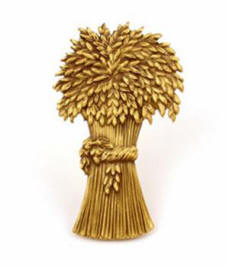 9
And the LORD spoke to Moses, saying, 10 “Speak to the children of
Israel, and say to them: ‘When you come into the land which I give to you,
and reap its harvest, then you shall bring a sheaf of the firstfruits of
your harvest to the priest. 11 He shall wave the sheaf before the
LORD, to be accepted on your behalf; on the day after the Sabbath the priest
shall wave it. 12 And you shall offer on that day, when you wave
the sheaf, a male lamb of the first year, without blemish, as a burnt
offering to the LORD. 13 Its grain offering shall be two-tenths
of an ephah of fine flour mixed with oil, an offering made by fire to the
LORD, for a sweet aroma; and its drink offering shall be of wine, one-fourth
of a hin. 14 You shall eat neither bread nor parched grain nor
fresh grain until the same day that you have brought an offering to your
God; it shall be a statute forever throughout your generations in all your
dwellings. Leviticus 23:9-14
9
And the LORD spoke to Moses, saying, 10 “Speak to the children of
Israel, and say to them: ‘When you come into the land which I give to you,
and reap its harvest, then you shall bring a sheaf of the firstfruits of
your harvest to the priest. 11 He shall wave the sheaf before the
LORD, to be accepted on your behalf; on the day after the Sabbath the priest
shall wave it. 12 And you shall offer on that day, when you wave
the sheaf, a male lamb of the first year, without blemish, as a burnt
offering to the LORD. 13 Its grain offering shall be two-tenths
of an ephah of fine flour mixed with oil, an offering made by fire to the
LORD, for a sweet aroma; and its drink offering shall be of wine, one-fourth
of a hin. 14 You shall eat neither bread nor parched grain nor
fresh grain until the same day that you have brought an offering to your
God; it shall be a statute forever throughout your generations in all your
dwellings. Leviticus 23:9-14
The feast of First Fruits took place on the second day of the feast of Unleavened Bread, according to Jewish timing it takes place on the 16th of Nisan. The feast takes place on the first day following the Passover of the Feast of Unleavened Bread. This corresponds with the reaping of the barley harvest.
The barley harvest was planted in the winter, since it’s now the month of Nisan (March/April) the harvest is now beginning to ripen. The first sheaf is cut from the harvest and is presented to the Lord in this feast.
The harvesting of the crop is a theme used to illustrate the kingdom of God. The Word of God is called a seed, which produces a crop. Jesus told the disciples to open their eyes at look at the fields which are ready to harvest (John 4:34-37). The saved are seen as the crop of salvation.
35Do you not say, 'Four months more and then the harvest'? I tell you, open your eyes and look at the fields! They are ripe for harvest. 36Even now the reaper draws his wages, even now he harvests the crop for eternal life, so that the sower and the reaper may be glad together. John 4:35
Seeds and harvest typify the Kingdom of God, composed of redeemed and resurrected saints. How can a decayed body be brought back to life? Paul answers this question using the illustration of a seed, when a seed is planted in the ground it dies, ceasing to exist as a seed. The life of the seed is then is transformed into a more glorious plant.
35 But someone will say, “How are the dead raised up? And with what body do they come?” 36 Foolish one, what you sow is not made alive unless it dies. 37 And what you sow, you do not sow that body that shall be, but mere grain—perhaps wheat or some other grain. 38 But God gives it a body as He pleases, and to each seed its own body. I Corinthians 15:35-38
In the same way, our mortal body is transformed from corruptible body to an incorruptible body. We are the crop of God’s Kingdom, souls redeemed out of fallen humanity to be put in the storehouses of God’s barn. Therefore the agricultural season used in the calendar of harvest have a greater meaning, they illustrate the Kingdom of God and God’s harvest.
Since Jesus died at the start of Passover, He was in the grave on Passover day. He was resurrected on Sunday morning, the beginning of Feast of First Fruits. Jesus is the “First Fruits” of the promised resurrection of the redeemed.
20 But now Christ is risen from the dead, and has become the firstfruits of those who have fallen asleep. 21 For since by man came death, by Man also came the resurrection of the dead. 22 For as in Adam all die, even so in Christ all shall be made alive. 23 But each one in his own order: Christ the firstfruits, afterward those who are Christ’s at His coming. I Corinthians 15:20-23
Feast of Weeks
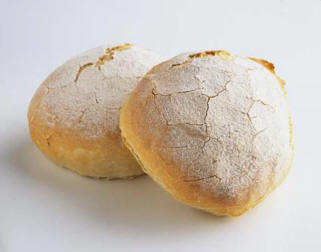 15
‘And you shall count for yourselves from the day after the Sabbath, from the
day that you brought the sheaf of the wave offering: seven Sabbaths shall be
completed. 16 Count fifty days to the day after the seventh
Sabbath; then you shall offer a new grain offering to the LORD. 17
You shall bring from your dwellings two wave loaves of two-tenths of an
ephah. They shall be of fine flour; they shall be baked with leaven. They
are the firstfruits to the LORD. 18 And you shall offer with the
bread seven lambs of the first year, without blemish, one young bull, and
two rams. They shall be as a burnt offering to the LORD, with their grain
offering and their drink offerings, an offering made by fire for a sweet
aroma to the LORD. 19 Then you shall sacrifice one kid of the
goats as a sin offering, and two male lambs of the first year as a sacrifice
of a peace offering. 20 The priest shall wave them with the bread
of the firstfruits as a wave offering before the LORD, with the two lambs.
They shall be holy to the LORD for the priest. 21 And you shall
proclaim on the same day that it is a holy convocation to you. You shall do
no customary work on it. It shall be a statute forever in all your dwellings
throughout your generations.
15
‘And you shall count for yourselves from the day after the Sabbath, from the
day that you brought the sheaf of the wave offering: seven Sabbaths shall be
completed. 16 Count fifty days to the day after the seventh
Sabbath; then you shall offer a new grain offering to the LORD. 17
You shall bring from your dwellings two wave loaves of two-tenths of an
ephah. They shall be of fine flour; they shall be baked with leaven. They
are the firstfruits to the LORD. 18 And you shall offer with the
bread seven lambs of the first year, without blemish, one young bull, and
two rams. They shall be as a burnt offering to the LORD, with their grain
offering and their drink offerings, an offering made by fire for a sweet
aroma to the LORD. 19 Then you shall sacrifice one kid of the
goats as a sin offering, and two male lambs of the first year as a sacrifice
of a peace offering. 20 The priest shall wave them with the bread
of the firstfruits as a wave offering before the LORD, with the two lambs.
They shall be holy to the LORD for the priest. 21 And you shall
proclaim on the same day that it is a holy convocation to you. You shall do
no customary work on it. It shall be a statute forever in all your dwellings
throughout your generations.
22 ‘When you reap the harvest of your land, you shall not wholly
reap the corners of your field when you reap, nor shall you gather any
gleaning from your harvest. You shall leave them for the poor and for the
stranger: I am the LORD your God.’” Leviticus 23:15-22
The fourth feast is known as “Weeks” or Shavuot, the Hebrew word for weeks. The feast gets its name because it takes place after seven “weeks” or 49 days from the feast of First Fruits. Then on the 50th day (Pentecost), a “New” grain offering was to presented to the Lord. This offering was two loaves of bread baked with leaven.
So why wait fifty days and then add leaven to the bread? What is the message of this feast? Pentecost is a significant event for the church; many times Christians are completely unaware of the foundation of this day called Pentecost. The Holy Spirit came upon the disciples as they gathered for the Jewish Feast of Pentecost in the upper room.
1When the day of Pentecost came, they were all together in one place. 2Suddenly a sound like the blowing of a violent wind came from heaven and filled the whole house where they were sitting. 3They saw what seemed to be tongues of fire that separated and came to rest on each of them. 4All of them were filled with the Holy Spirit and began to speak in other tongues[a] as the Spirit enabled them. Acts 2:1-4
The feast of Pentecost with its two loaves of bread was a picture of the harvest to come. The two loves baked with leaven symbolized the two bodies of believers both Jew and Gentile brought into the house of God, the Temple.
14 For He Himself is our peace, who has made both one, and has broken down the middle wall of separation, 15 having abolished in His flesh the enmity, that is, the law of commandments contained in ordinances, so as to create in Himself one new man from the two, thus making peace, 16 and that He might reconcile them both to God in one body through the cross, thereby putting to death the enmity. 17 And He came and preached peace to you who were afar off and to those who were near. 18 For through Him we both have access by one Spirit to the Father. Ephesians 2:14-17
Jesus was killed on Passover, resurrected on First Fruits; he spent 40-days with His disciples between these two feasts in a post-resurrection ministry. He then told them to remain in Jerusalem until they receive the “Promise” of the Father, the Holy Spirit (Acts 1:3). The Holy Spirit would enable the Church to Harvest the souls for eternity in the coming centuries. The Holy Spirit came upon the disciples at the feast of Pentecost.
The leaven in the bread represents the sin within body of Jews and
Gentiles. The church would not be perfect because it still made up of
fallen men and woman who are not perfected yet.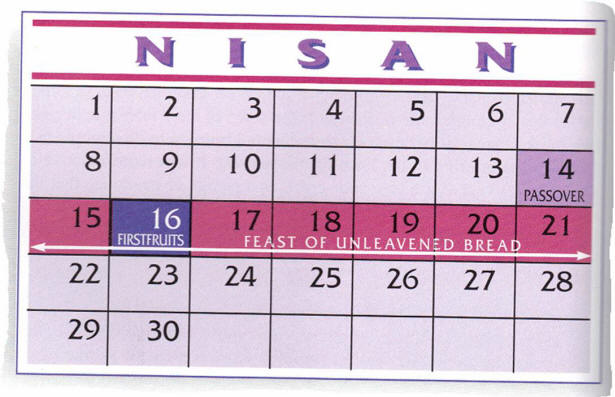
[1] The Feasts of the Lord, pgs. 13-14, Ken Howard, Marvin Rosenthal, Thomas Nelson Publishers, Nashville TN, 1997